Psoriasis, the initial stage of which may occur with certain factors, manifests itself in the form of reddish plaques with pure boundaries.They are then covered with silver white scales, merged with each other.As a general rule, plaques can be found in the head, knee and elbow.Psoriasis can affect patients of any age and sex.However, until the end of the unlawful etiology of the disease, it does not allow for cure psoriasis, however, significantly reducing the symptoms of the disease and achieving longer remission if therapy begins in the early stages of psoriasis, properly assessing the initial signs of psoriasis.
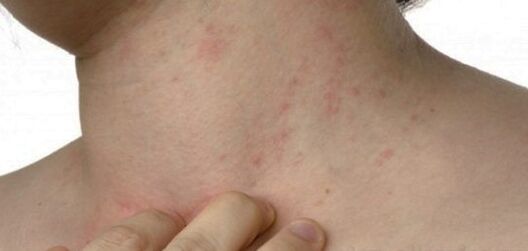
Symptoms of the initial stage of the disease
To recognize the initial stage of the disease, it is important to know what the primary symptoms look like.At the very beginning, a single papul appears, which can range from more to 2-5 cm and the shape of plaque covered with white scales.When they were shaken, the characteristic symptom of the Psoriatic triad manifests:
- "Starine spot" (light compartment of scales during scravation);
- "Terminal movie" (exposure to shiny, thin and wet skin after the balance is removed);
- Symptoms of "blood facilities" (further removal of the terminal film appears on the surface of the skin similar to the dew).
The initial stage of the disease is characterized by the occurrence of psoriatic focuses, which are most often submitted to any trauma.As a general rule, they are elbows, knee space at the places of combs or scratches.These manifestations are called "symptoms of kebner".The papular rash spreads linearly at the very beginning, directly at the site of irritation and can exist for a long time without dynamics.These rashes are called "guard".The rash is highly itching and itching.The initial stage lasts a few weeks.Subsequently, the papules grow and merge into the psoriatic plaques that can cover significant areas of the body.Psoriasis can appear anywhere.The most dangerous rashes on the face, but the initial stage is very rare.
In the early stages of the disease, typical places of the localization of the disease
The most common rashes can be observed:
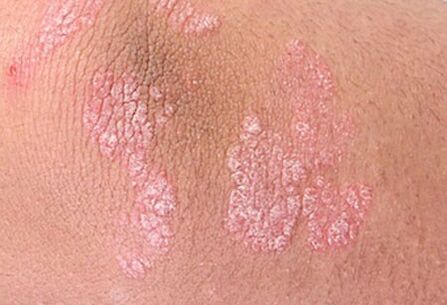
Legs.On the legs, the initial stage of psoriasis develops from a single little rash that is primarily on the legs and knees, but are able to appear on any surface of the legs.
Elbow.The elbow occurs with the most common plane, with symptoms characterized by red small rashes with severe peeling.At the same time, the skin is roughly observed in the elbow.In addition, rash on the elbow can be symmetrical.
Nails.Psoriatic manifestations on the hands of the nails resemble a fungal infection.Above all, the longitudinal stripes (dots) occur at the edge of the nails (in the picture) and then spread to the roots of the nails.At the same time, the nail plate begins to thicken and dull.As the symptoms of the disease progress, the area of the nails may dry out completely.
Face.Psoriasis is very rare on the face as this form of psoriasis is considered atypical.The eyelids, nasolabial folds, eyes and eyebrows (in the picture) appear in the eyelids, eyelids (in the picture).In rare cases, the rash on the face appears in the red bachelor of the lips and mucous membranes (face and tongue).
The specifics on the face have a specific, sensitive skin and a lot of nerve endings.First, the papules appear (small, slightly elevated over the skin, lumps), accompanied by severe itching.After that, an epithelium and plaque appear on top of the knot.
Hands.The symptoms of psoriasis occur suddenly, appearing in the form of a small rash (in the picture), which many patients see as allergic.And only with the appearance of gray dry scales on their hands, palms and elbows, patients turn to a dermatologist for help.Typically, if the palm has psoriasis rash, similar manifestations can be observed on the legs.Psoriasis manifestations are most often localized between the fingers, which is explained by the most favorable environment in this place.The back of the brushes are much less wondering.When the psoriatic spots appear at hand, their sensitivity is possible.
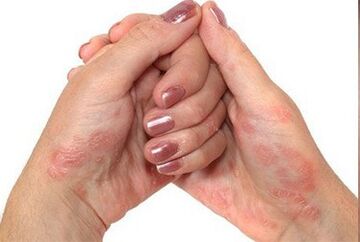
Psoriasis photo of the initial stage
- Discovery of tests online - urine, blood, general and biochemical.
- What does bacteria and inclusions mean in urine analysis?
- How to understand a child's analysis?
- Characteristics of MRI Analysis
- Special tests, ECG and ultrasound
- Standards during pregnancy and values of differences ..
What is it?Psoriasis is a disease of non -infectious skin, so it is impossible to infect.Not only does it affect the skin, it also has a negative effect on the whole body.This is characterized by a chronic course with aggravation and remission periods.The disease is caused by immune cells in their body, ie an autoimmune disease.Rising from the depths of the skin to the upper layers, these cells cause inflammation, the excessive distribution of epidermis cells, which leads to excessive growth, the appearance of new small capillaries.Externally, it looks like red or purple spots - psoriasis plaques.
The first signs and symptoms of psoriasis
Because psoriasis - a systemic disease that affects all systems of the body - the patient suffers from general weakness and rapid fatigue.The main symptom of the initial stage of psoriasis is psoriatic rashes and plaques, but accompanies the person involved in the development of the disease.These are due to the accelerated, uncontrolled distribution of the cells in the upper layer of the skin-keratinocytes.The affected cells are formed and the skin is thickened in these areas and is red due to increased formation of new capillaries.This leads to minor drip bleeding any, even in the case of plaques injuries.The surface of the plaques is often covered with gray raids, similar to paraffin.Even the term "paraffin lakes" was created.This plaque consists of dead epithelial cells that accumulate on the plaque's surface due to the impaired rejection process.Spots can reach quite large sizes and merge with each other.They have a hot feeling, often with severe itching.Comys can lead to infection.
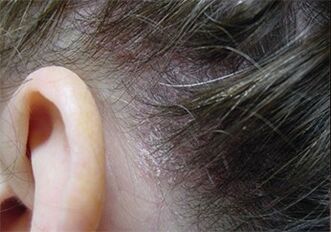
Over time, the nails begin to change.Their surface is exhausted, the pressing appears, the pink spots are noticeable under the nail plate - the accumulation of fluid, the nail is yellow, thickened, and is in the form of poultry claws.All this is due to nutrition and blood circulation violations.Nail beds are subjected to excessive keratinization, leading to rejection of nail and loss.There is often a red inflamed boundary around the nails.Small joints are affected by disease and small joints - this is accompanied by pain and inflammation.Next to the plaques, beside psoriasis, the papules are formed on the skin - a small (about 1 mm) protruding formation that resembles a rash.Often localized on the elbows and knees, even during remission.During the development, the plaques begin to light, obtain the shape of the rings and disappear completely.The pigmented areas remain in place.The scalp psoriasis has the same symptoms as the body.In this case, the hair structure does not change.The rashes also cover the adjacent areas of the skin - behind the ears, around the neck.
Types of psoriasis
According to the symptoms, the disease is divided into two types: pustular and non -marked.There are many types of disease in these groups.
Forms of pustular psoriasis:
- generalized;
- Ring;
- palmoplantar (primarily affected limbs);
- Ladamary;
- Psoriatic impetigo.
- normal (chronic plaque psoriasis);
- Erythrodermic.
In addition, the following types of disease are distinguished:
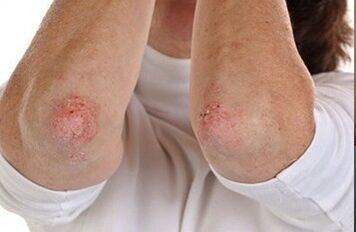
- Napkin psoriasis;
- Skin folds and bending surfaces psoriasis;
- Seborrheic -like;
- drug.
- light (affects less than 3 % of the body surface);
- average (affects 10 % of the body surface);
- difficult (affects more than 10 % of surfaces).
Depending on the form of rash, this type of psoriasis can be distinguished:
Stages of psoriasis, symptoms
The first plaques appear in dry -skinned areas and never occur where the skin is too wet, for example, armpit.First of all, the appearance of spots is seen inside the elbow, under the knees, on the boundary of the hair, on the head, and in places exposed to injuries or friction.The place is usually symmetrical.Take such sections during the disease:
- progressive (formation of new spots, existing growth, itching, noticeable peeling);
- stationary (slowing or suspension of plaques growth, lack of newly formed spots);
- Regressive (reduction or lack of peeling, disappearance of stains and plaques with the appearance of pigmented skin areas in place, and signs of psoriasis are almost missing).
There are no special tests to make the diagnosis.The diagnosis is based on external features.One of these signs is the occurrence of bleeding during plaques during the so -called bloody dew scraping.Another specific sign of psoriasis is the presence of a pale border around a young papule that has not yet been covered.This is what is the vascular reaction of the skin, which is a progression of the disease.In severe forms of the disease, blood count can change.Signs of the flowing inflammatory process appear.In some cases, you should perform a biopsy to exclude other skin diseases and strengthen the presence of psoriasis.
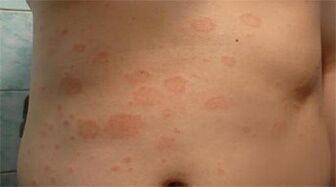
Effective treatment of psoriasis
In the treatment of psoriasis, both local drugs, internal, physiotherapy and medicine treatment are used.Medicines are used in the form of ointments during the early mild course of the disease.First they use simple ointments and creams and then enter ointments containing hormones.The cream from psoriasis should only be applied to plaques and spots.With the average and severe course, the disease is used for internal products that affect the whole body, but the best result is given.This group includes vitamin A, immunosuppressants, cytostatics.Physiotherapists bring tangible relief for patients with psoriasis, can inhibit the onset of the disease and sometimes replace the use of some drugs.UV irradiation (phototherapy), laser, ultrasound and magnetic, hyperthermia, electrospheres, electrophoresis, electrophoresis.Psoriasis is able to obtain resistance over treatment over time, so it is advisable to change methods (rotation of treatment) from time to time.The disease with manifestations on the head is treated in the same way as the other parts of the body using ointment and physiotherapy.
Diet with psoriasis
Nutrition should help metabolism and prevents skin from appearance or worsening.Because almost all patients violate lipid metabolism, low prey products should be preferred.A special fire diet, Pegano has a wide reputation.You should try to follow some simple rules when you compile your diet:
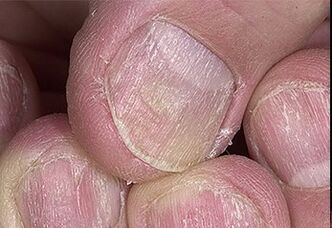
- Rejection of alcoholic beverages;
- Food 6 times a day, little by little;
- Excludes fried, smoked foods from the diet;
- Reduce the salt content of food;
- If possible, do not consume food with the contents of paints, stabilizers and other nutritional supplements;
- Excludes citrus fruits;
- Increase the share of vegetables and cereals in the diet;
- Mandatory use of vegetable oils.
Adherence to these simple rules promotes psoriasis aggravation and regardless of therapeutic diet.
Psoriasis initial stage symptoms photo
Among the first first symptoms of the initial stage psoriasis, the appearance of epidermal-dermal papular elements can be distinguished.In the early stages of psoriasis, the papules look small in the picture, with pink, hemispherical formations and a smooth, shiny surface.A few days later, they are covered with silver -white, slightly scales.Such manifestations are called "point" psoriasis.In the early stages of psoriasis, the appearance of new small elements of psoriasis or an increase in existing first signs of psoriasis is characterized.
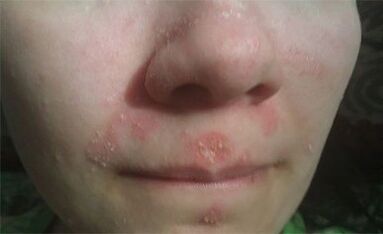
The almost presence of the kebner phenomenon should be installed according to linear psoriatic elements that occur after any injury, such as severe itching, etc.After combing, finally, with a progressive stage, patients feel different intensity, which is usually not typical of other stages of the process.The duration of the progressive phase is individual.The progressive phase usually lasts from 2 weeks to several months.During this period, it is best to use non -hormonal ointments from psoriasis as prevention and further treatment.
The regressive stage of psoriasis is the last phase of the psoriatic cycle.The reduction of peeling, the gradual smoothing of the central elements and the subsequent resolution.In this case, images of various figures (arches, trapezoids, rings) can be obtained.In this case, psoriasis is called "geographical".It may be a different way to solve the elements in which the element begins with the periphery of the item.No scar or atrophy.The permissible elements are hyperpigmentation or areas in which there is no pigment (psoriatic pseudonym -proderma).These changes are temporary.It should be noted that such a class is largely conditional.In some cases, it is difficult to immediately determine the process section.In this case, the diagnosis of psoriasis was created after the patient has been observed.























